drop ship
description: supply chain management method in which the retailer directs their suppliers to ship directly to the retailer's customers
37 results
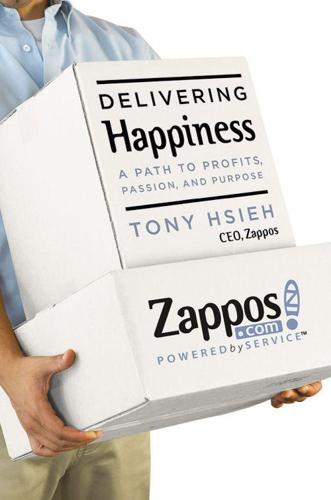
Delivering Happiness: A Path to Profits, Passion, and Purpose
by
Tony Hsieh
Published 6 Jun 2010
For 2003, we were projecting sales to double, with about 25 percent of our overall sales coming from our drop ship business. The drop ship business was easy money. We didn’t have to carry inventory so we didn’t have any inventory risk or cash-flow problems with that part of the business. But we had plenty of customer service challenges. The inventory feeds that we were getting from our vendors for our drop ship business were 95 percent accurate at best, meaning that we would not be able to actually fulfill 5 percent of all of our drop ship orders. On top of that, the brands did not ship as quickly or accurately as our own WHISKY warehouse, which meant we had plenty of unhappy and disappointed customers.
…
Zappos would take orders from customers on the Internet, then transmit the order to the manufacturer of each brand, which would then ship directly to the Zappos customer. This was known as a “drop ship” relationship, and although it already existed in many other industries, drop shipping had never been done before in the footwear industry. Nick and Fred were betting that they would be able to convince the brands at the next shoe show to start drop shipping, and then Zappos would not have to own any inventory or worry about running a warehouse. Fred told us that he’d climbed the corporate ladder at Nordstrom for eight years, just bought a house, and just had his first kid.
…
We all knew deep down inside that we would have to give up the drop ship business sooner or later if we were serious about building the Zappos brand to be about the very best customer service. We also knew that the bigger we grew, the more reliant we would be on the cash from drop shipping. There would never be a good time to walk away. The longer we waited to pull the trigger, the more our employees would lose faith in us. So we made what was both the easiest and hardest decision we ever had to make up until that point. In March 2003, with the flip of a switch, we turned off that part of our business and removed all of the drop ship products from our Web site.
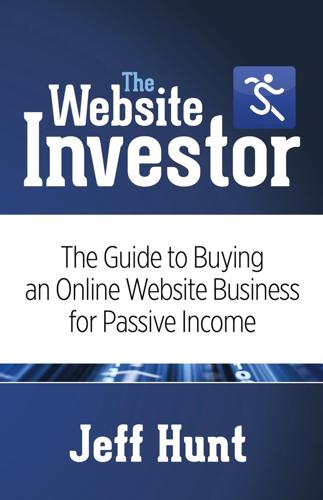
The Website Investor: The Guide to Buying an Online Website Business for Passive Income
by
Jeff Hunt
Published 17 Nov 2014
Drop Shipping As eCommerce has exploded and continues to grow at double-digit rates every year, manufacturers of small items, like medicine and jewelry, and big items, like furniture and automobiles, offer drop-shipping services. For the website owner, drop shipping saves many headaches. The website becomes a pure middleman; its main function is to attract customers, take and track orders, and place those orders with the manufacturer. That doesn’t mean drop-ship eCommerce sites are necessarily easy to operate, but it does mean they can be operated without ever touching the product. Amazon Working with Amazon—instead of competing with Amazon—is a strategy many thousands of people have adopted over the past ten years.
…
Shipping Either the website packages and ships products themselves, or the manufacturer or distributor drop ships the product to the customer on behalf of the website. Self-shipping of products may potentially increase profitability because the seller may get a better price for inventory from the wholesaler. However, self-shipping means that the website owner must do the following: 1. Buy inventory 2. Stock and measure inventory levels 3. Package product for shipment 4. Ship product 5. Manage returns These responsibilities require effort and good systems. The fewer product types being sold, the easier it is to manage. Drop Shipping As eCommerce has exploded and continues to grow at double-digit rates every year, manufacturers of small items, like medicine and jewelry, and big items, like furniture and automobiles, offer drop-shipping services.
…
The chart below compares characteristics of revenue sources, but it is only a general guide since every website is unique: Revenue Source Work Requirement per Transaction Systems Requirement Knowledge Requirement Advertising – Contextual Low Low Low Advertising – Direct Low to Medium Low Low Affiliate Medium Low Medium Services – High Touch High Low High Services – Low Touch Medium Medium Medium Services – No Touch Low High Medium eCommerce – Self Shipping Medium High Medium eCommerce – Drop Shipping Low Medium Low eCommerce – Partner with Amazon or eBay Low to High Low to Medium Medium Leads Low Medium Low Subscriptions Low High Medium Case Study: Me, a Media Mogul I sat fascinated, listening to a webinar hosted by successful Internet marketer, and now friend, Eric Holmlund.

5 Day Weekend: Freedom to Make Your Life and Work Rich With Purpose
by
Nik Halik
and
Garrett B. Gunderson
Published 5 Mar 2018
When adding products to your store, the ideal solution is to source them through a drop-shipping service such as AliExpress.com. You simply copy the product from AliExpress to your store, set your own retail prices, and after you sell a product, you purchase it from AliExpress and have it shipped directly to your customer who just made the purchase. To import drop-shipped products directly into your commerce store, you may want to use Oberlo.com. It is built for Shopify and specifically designed to manage your AliExpress drop shipping, and you can import hundreds of products to your store in minutes. One of the benefits of building a profitable online e-commerce store is the ability to flip it for profit.
…
After a couple of years he had over 250,000 Facebook fans. “There are two ways to get to the top of an oak tree. One way is to sit on an acorn and wait; the other way is to climb it.” —KEMMONS WILSON He started looking for ways to monetize the business even further. After taking online courses on drop shipping, he launched an Amazon drop-shipping business on October 1, 2014, starting with private-labeled GoPro selfie sticks and stainless steel water bottles. He was sweating bullets, wondering if he’d really be able to sell anything, but his first product order was for $6,000. Within eight weeks of launching, he was selling $90,000 per month (sales spiked for the holidays).
…
If you are able to generate leads for business owners via social media marketing, you can write your own ticket. You can charge $1,000 to $5,000 per month per customer to manage their social media. E-Commerce Online entrepreneurs can generate income-building e-commerce stores on platforms like Shopify. A Shopify store can be filled with hundreds of products that can be drop-shipped from vendors directly to consumers. You can also incorporate targeted traffic generated from paid online ads on Facebook and Instagram. The three essential parts of launching your e-commerce business include building the store, choosing your product niche, and finding product suppliers. When it comes to building your online store, Shopify allows you to rent a pre-built store and maintain it for less than $30 per month.

Blockchain Chicken Farm: And Other Stories of Tech in China's Countryside
by
Xiaowei Wang
Published 12 Oct 2020
Drop-shippers are plentiful on Amazon these days—the business model has taken over much of Amazon, and American e-commerce. Unlike traditional shops, drop-shippers don’t keep anything in stock themselves, but order directly from a third party to have the item sent to a seller. The global reach of drop-shipping is born out of Alibaba and AliExpress, allowing drop-shipping entrepreneurs access to millions of items, shipped at low cost, directly from China. There are numerous online articles about how to start a profitable drop-shipping business, and many of these businesses are responsible for the deluge of Instagram ads that you see: lifestyle brands selling sleek water bottles, new travel bags, and suitcases. These items are often from AliExpress: drop-shippers simply provide the advertising and marketing.
…
He put in manufacturing equipment on-site, in his family’s home. Business took off. His combination of premade and custom orders earned him US$1.16 million in 2017. These days he sells all over the world; recent orders have shipped to Vietnam and Korea. International business is expanding because of drop-shipping and AliExpress, a site that bridges foreign buyers with small businesses in China, like Ren’s. His nephew even gave up a lucrative software development job in a nearby city to come back and help run the Taobao store. The local government is more than willing to take credit now for such e-commerce success, but Ren explains that he was a lone agent for a long time.

The Futurist: The Life and Films of James Cameron
by
Rebecca Winters Keegan
Published 3 Nov 2009
Instead, he sent Mead a quick sketch of his own in which the Sulaco resembled a giant gun drifting through space. Mead expounded on the giant-gun design, which was ultimately what appeared in the film. Mead also worked on the drop ship the marines would use to descend into LV-426’s atmosphere. Here Cameron wanted a vehicle that could dive down onto hostile planets and deposit ground troops, like the helicopters that plopped American GIs into the jungles of Southeast Asia. But again, the final drop ship would be based upon a design Cameron constructed himself, using parts from a model kit of an Apache helicopter that he bashed together on a Sunday afternoon and spray painted gray.
…
“Ray Lovejoy is a terrific editor, but he didn’t know what hit him with Jim,” says James Horner, who, as the film’s composer, had the unfortunate role of being the next man in the postproduction line. Cameron’s post crew faced other delays. The sound mixers weren’t sure how to tackle the scene where the drop ship flies onto LV-426, since the special-effects artists were still working on it. So Cameron ran down in front of the screen the mixers were using, held up a broom, and said, “Follow this,” as he ran in the path of the drop ship. The timing worked perfectly. But the film was still falling behind, causing serious problems for Horner, who was supposed to have seven weeks to compose the score at Abbey Road Studios.
…
The English must have thought the Americans were having an awfully good time there, because every week, several cases of K-Y jelly were shipped to the set. The lubricant was not for recreational use, however—it was an important ingredient in extraterrestrial spit, giving the aliens’ drool that special glisten. Lamont seemed to have a knack for procuring good-looking junk. To build the full-sized version of Cameron’s Vietnam-evoking drop ship, he used the undercarriage of an old Vulcan helicopter that was being dismantled. For the armored personnel carrier, Lamont got his hands on a vehicle that British Airways used to tow its 747s. The aircraft tow truck weighed seventy-eight tons—even after Lamont’s crew pulled thirty-eight tons of lead out of it, they had to reinforce the floor at the power station so it wouldn’t fall through.
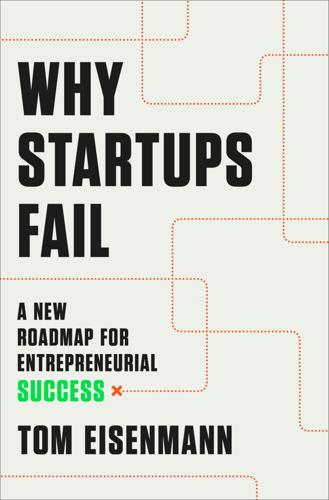
Why Startups Fail: A New Roadmap for Entrepreneurial Success
by
Tom Eisenmann
Published 29 Mar 2021
Big sellers included Eames chairs, umbrellas, antique typewriters, and vibrators. Customers found great appeal in unique items that conveyed a quirky, cheeky attitude—for example, a chandelier made of martini glasses or a rhinestone-encrusted motorcycle helmet. Fab was an instant hit, selling $600,000 in merchandise in its first twelve days. And because manufacturers drop-shipped items directly to customers, Fab didn’t need to hold inventory. Featured offers spread like wildfire through social networks, so the startup didn’t need to spend any money on advertising, either. Avoiding these expenses meant that cash flow was positive—at least initially. By year-end, the startup had over a million members and had raised another $48 million in venture capital.
…
By that point, only one-third of Fab’s sales came from daily deals; the balance came from a broad selection of products listed on the site: eleven thousand in total, the majority of which were furniture and home décor; other categories included jewelry, food, and pet care. With this abundance of items, Fab completed a major site redesign to enhance searchability for its twelve million members. Also, since drop-shipping had generated customer complaints about slow delivery times, the startup shifted to holding more merchandise in inventory and shipping goods from its own warehouse. Finally, Fab stepped up its efforts to design and sell Fab-branded private label products, which promised higher gross margins. To advance this strategy, Fab acquired Massivkonzept, a German company that designed, manufactured, and sold customized wooden furniture, for stock worth about $25 million.
…
If a company cannot keep its learning proprietary by enforcing patents, nondisclosure contracts, or strict secrecy procedures, it may forfeit its cost advantage as rivals copy its production process improvements. Like most businesses, Fab benefited from some scale economies, but they weren’t large enough to impel rapid growth. Early on, the venture kept its fixed costs low by relying on vendors to drop-ship items; in this way, Fab avoided the fixed expense of managing a warehouse. Likewise, value-added elements—labor and machinery for transforming raw materials into finished goods—represented a small percentage of Fab’s total costs. With the exception of private label custom furniture that it manufactured in-house, Fab procured finished goods from vendors.
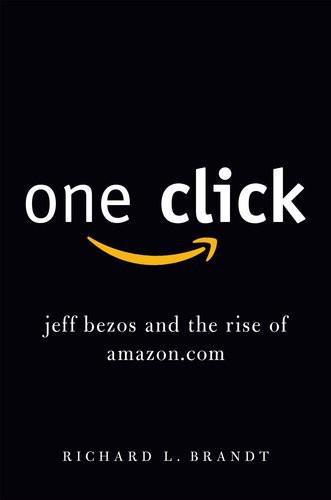
One Click: Jeff Bezos and the Rise of Amazon.com
by
Richard L. Brandt
Published 27 Oct 2011
Bezos was now taking the process of stockpiling and distributing books into his own hands. “The logistics of distribution are the iceberg below the waterline of online bookselling,” he said at the time. At the same time, the distributors were trying to build up the top of that iceberg. Ingram decided if it could store and distribute books, it could “drop-ship” them directly to the customers itself. It developed the capability to ship books in small quantities directly to consumers. Then it started opening a few online bookstores to compete with Amazon. The test program failed, however, because its online stores couldn’t attract customers. Amazon already had them all.
…
Although distributors failed in their attempts to get into Amazon’s business, Amazon was able to make inroads into the distributors’ business. Bezos knew that shipping most of the books from Amazon’s warehouses would be faster. It was a process he could control and improve himself, and the race to build ever larger and more automated distribution centers was on. “There are huge efficiencies to be gained through drop-shipping [from the distributor], but they are paid for by increased complexity in sorting,” Bezos said. “Your partner [the distributor] has to be very adept, because if it is done wrong you can really mess up your customer service.” Bezos didn’t want to build just any warehouses. His distribution centers had to organize books, find them quickly, match them with shipping orders, package them, and get them in the mail.
…
See Amazon customer service Cybook Davis, Paul. See Barton-Davis, Paul DBM manager De Jonge, Peter Della & James D. E. Shaw Bezos at Internet companies of Digicash Digital Book, Inc. Dillon, Eric Discounted books and Amazon impact on book industry, Disney, Walt Distributors drop-shipping and early Amazon online business, failure of of wholesale books See also Warehouses and distribution Doerr, John Dot-com companies. See Internet companies DREAM Institute Drugstore.com DVDs, Amazon sale of Dynabook Early adopters E-bay, versus Amazon Auctions E-books agency model and Amazon. see Kindle devices, competitive early readers free future view for Google market, growth of pricing of Edison, Thomas E Ink Corporation Elastic Compute Cloud (EC2) Electronics Ellison, Larry Employees Bezos interaction with compensation and cult of Amazon expansion (1998) firing (2000) hiring practices individualistic “Just Do It” award two-pizza teams Wal-Mart executives, hiring of work environment Endurance (Lansing) E-Niche Equinet Erwise Everybook Express Lane Farsight Financial status cost-cutting decline (2000) first investors growth versus profits strategy investment advisors IPO, Amazon leverage, Bezos approach to losses and debt (1999) pro forma net profit (2002) raising capital, problems of recovery of Amazon revenues in 2010, share price, growth rate stock downgraded valuations of Amazon, initial Web site building, profitability of Fitel, Bezos at Food and grocery items Fortune Frederick, Robert Free Software Foundation Frisbee Frox, Inc.
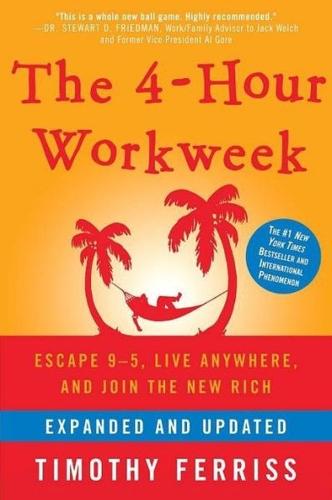
The 4-Hour Workweek: Escape 9-5, Live Anywhere, and Join the New Rich
by
Timothy Ferriss
Published 1 Jan 2007
Three times a week, Doug presses a single button in the Yahoo management page to charge all his customers’ credit cards and put cash in his bank account. Then he saves the PDFs as Excel purchase orders and e-mails the purchase orders to the manufacturers of the CD libraries. Those companies mail the products to Doug’s customers—this is called drop-shipping—and Doug pays the manufacturers as little as 45% of the retail price of the products up to 90 days later (net-90 terms). Let’s look at the mathematical beauty of his system for full effect. For each $325 order at his cost of 55% off retail, Doug is entitled to $178.75. If we subtract 1% of the full retail price (1% of $325 = $3.25) for the Yahoo Store transaction fee and 2.5% for the credit card processing fee (2.5% of $325 = $8.13), Doug is left with a pretax profit of $167.38 for this one sale.
…
The Wall Street Journal, July 18, 2005 (http://www.technologyinvestor.com/login/2004/Jul18–05.php). 26. This was a new product category that I created to eliminate and preempt the competition. Strive to be the largest, best, or first in a precise category. I prefer being first. 27. If you decide to resell someone else’s higher-end products like Doug, especially with drop-shipping, the risk is lower and smaller margins can suffice. 28. “Back-end” products are products sold to customers once the sale of a primary product has been made. iPod covers and car GPS systems are two examples. These products can have lower margins, because there is no advertising cost to acquire the customer. 29.
…
Market Selection He chose music and television producers as his market because he is a musician himself and has used these products. 2. Product Brainstorm He chose the most popular products available for resale from the largest manufacturers of sound libraries and arranged a wholesale purchase and drop-ship agreement with them. Many of these libraries cost well above $300 (up to $7,500), and this is precisely why he needs to answer more customer-service questions than someone with a lower-priced product of $50–200. 3. Micro-Testing He auctioned the products on eBay to test demand (and the highest possible pricing) before purchasing inventory.
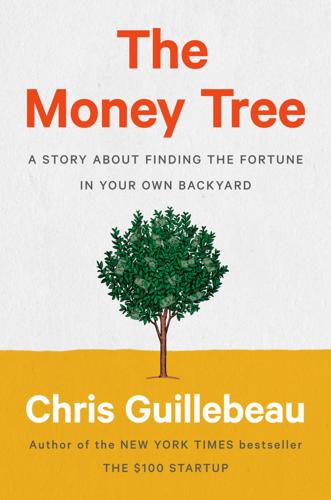
The Money Tree: A Story About Finding the Fortune in Your Own Backyard
by
Chris Guillebeau
Published 6 Apr 2020
Or to be precise, I have a new assignment for you.” He went on. “You’re absolutely right that there’s a lot more to learn about reselling. We could talk about drop-shipping, where you don’t keep any inventory on hand, allowing you to operate the business remotely. We could talk about how to find more items to sell. We could talk about tools and resources to make the whole process more efficient. But the fact is that you can learn all of that on your own.” Jake made a note to add drop-shipping to his list of topics to research further. “Okay,” he said when he looked up. “So I’ll try to learn more about that before we meet up again.
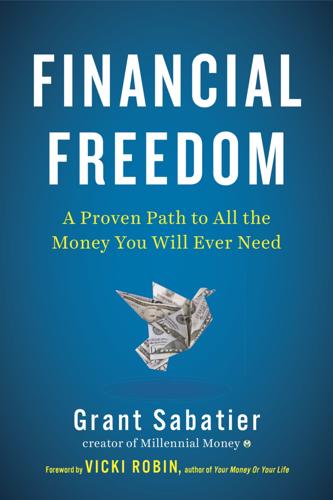
Financial Freedom: A Proven Path to All the Money You Will Ever Need
by
Grant Sabatier
Published 5 Feb 2019
I know a bunch of people who’ve created online courses on a niche topic, like taking care of orchids, repairing guitars, or even launching books, who are able to completely live off the income of a course they created over five years ago. Every year they update the content of the course and their audiences just keep growing. Drop-ship companies are also popular passive income businesses. The idea behind them is that you design a product and completely outsource the manufacturing, ordering, distribution, and customer service, so you don’t have to do much. When someone orders your product (for example, through Amazon), then Amazon fulfills the order and you get paid.
…
A good way to build a passive income stream is by selling something that you spend a little time creating but that people can buy for a long time without you having to put in much (if any) additional work. A few examples of potential passive income ideas are building an online course, launching a drop-ship product on Amazon, creating an app, writing a book, or launching an apparel item. Then there are semi-passive income streams like blogging, since you make money on content that you previously published but don’t have to update. Most of my own blogging income comes from blog posts I wrote two or three years ago.
…
Passive income—The holy grail of moneymaking, passive income sources make money that requires little to none of your time. While passive income can take a lot of time to set up, the long-term return is often worth it. Examples of passive income include rental income, blogging income, online course income, and drop-ship income. But stock investing income is the ultimate passive income, since it requires very little setup and, due to compounding, generates increasingly large returns over time. This is the main strategy the wealthy use to both get and stay rich. Real hourly rate—The amount of money you are actually paid after factoring in the impact of taxes and the additional time (and money) required to do the job, such as getting ready, commuting, and buying clothes for work.

The Millionaire Fastlane: Crack the Code to Wealth and Live Rich for a Lifetime
by
Mj Demarco
Published 8 Nov 2010
In general: Drivers create MLM companies; they don't join them. Drivers sell franchises; they don't buy them. Drivers offer affiliate programs; they don't join them. Drivers run hedge funds; they don't invest in them. Drivers sell stock; they don't buy stock. Drivers offer drop-shipping; they don't use drop-shipping. Drivers offer employment; they don't get employed. Drivers accept rents and royalties; they don't pay rents and royalties. Drivers sell licenses; they don't buy them. Drivers sell IPO shares; they don't buy them. So are you DRIVING a Fastlane? Or HITCHHIKING one? If this hitchhiker description describes you, don't get discouraged or defensive.
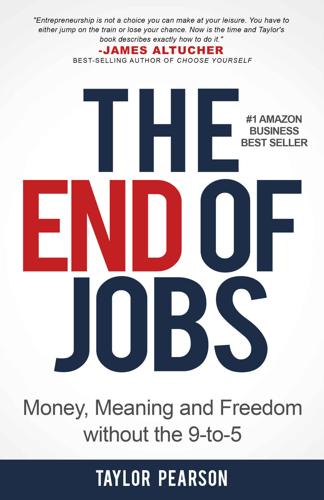
The End of Jobs: Money, Meaning and Freedom Without the 9-To-5
by
Taylor Pearson
Published 27 Jun 2015
To download an interview with Dan on how he turned a $40,000 per year web design agency Into a $40,000 per month recurring revenue service, go to http://taylorpearson.me/eoj Chapter 8 32. Kevin Kelly, write about his the phenomenon in more detail at http://kk.org/thetechnium/2008/03/1000-true-fans/ 33. To hear more from Andrew about the lifestyle and business possibilities enabled by the eCommerce drop shipping model and why individuals with hard skills and ambition has more opportunity than ever and why those without are screwed, download his interview at http://taylorpearson.me/eoj 34. http://www.innosight.com/innovation-resources/strategy-innovation/upload/creative-destruction-whips-through-corporate-america_final2012.pdf Chapter 9 35. http://www.softwarebyrob.com/ and http://www.startupsfortherestofus.com/ 36.

Lifestyle Entrepreneur: Live Your Dreams, Ignite Your Passions and Run Your Business From Anywhere in the World
by
Jesse Krieger
Published 2 Jun 2014
While still helping run the poker website, he said, “I decided to launch an online nutritional supplement business together with my partner who takes care of the production and distribution. This allows me to be location independent.” The business consists of an online web store with a number of popular nutritional supplements. On the back-end there are agreements with companies to “drop-ship” orders to the end customer, so there is no need for inventory on hand. Taking advantage of the SEO skills gained from studying at night after his former job, Jasper was able to get the website ranked highly for a number of popular search terms, sending a steady stream of customers to their site every day.

Content: Selected Essays on Technology, Creativity, Copyright, and the Future of the Future
by
Cory Doctorow
Published 15 Sep 2008
The actual total number of books printed is approximately the number of books ordered, but never exactly — if you've ever ordered 500 wedding invitations, chances are you received 500-and-a-few back from the printer and that's why. And the numbers just get fuzzier from there. Copies are stolen. Copies are dropped. Shipping people get the count wrong. Some copies end up in the wrong box and go to a bookstore that didn't order them and isn't invoiced for them and end up on a sale table or in the trash. Some copies are returned as damaged. Some are returned as unsold. Some come back to the store the next morning accompanied by a whack of buyer's remorse.
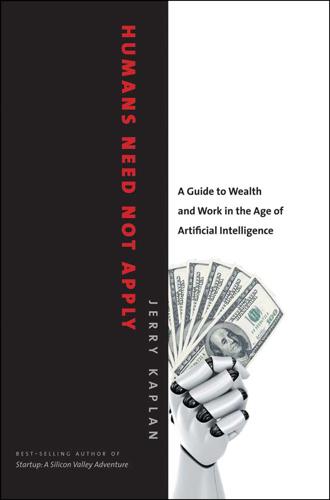
Humans Need Not Apply: A Guide to Wealth and Work in the Age of Artificial Intelligence
by
Jerry Kaplan
Published 3 Aug 2015
Lacking the capital and the connections to invest in warehouses and inventory, Jeff did the next best thing: he made a deal with the largest wholesaler at the time, Ingram Book Group. Ingram stocked and shipped books in small quantities to independent bookstores around the country, and the wholesaler also served as a resource for major chains if they ran short of stock locally and needed a quick delivery. The advantage, from Jeff’s perspective, was that Ingram would drop-ship orders as small as a single book, though I suspect the company wasn’t very happy about it. My startup idea was that goods didn’t have to be sold online at fixed prices. So along with two partners I started Onsale.com, the first auction site on the Internet.1 But Jeff learned an important lesson from Dave Shaw that I had missed, at least at first: the real value wasn’t in the inventory, it was in the data.
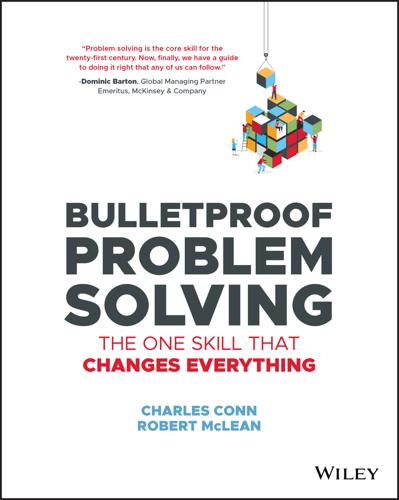
Bulletproof Problem Solving
by
Charles Conn
and
Robert McLean
Published 6 Mar 2019
The team estimated that Home Depot was able to operate with 5–7% less shipping and logistics costs than Hechinger, and negotiate as much as 5% lower costs for the same goods by concentrating volume on orders of fewer retail items (sometimes called stock keeping units, or SKUs). Cross‐docking or breaking up manufacturers' shipments to go to the various stores is undertaken on a small scale, but for the most part, suppliers are more than willing to drop ship to the stores because the individual locations order by the trailer load. Home Depot's average sales per store run around $20 million, or more than double Hechinger's or Builders Square's. Analyst report, The First Boston Corporation So Home Depot was generating the same return on invested capital, but able to make up for much lower prices with a combination of lower distribution costs, cheaper sourcing, lower store and central overheads, and much higher asset productivity.

Algospeak: How Social Media Is Transforming the Future of Language
by
Adam Aleksic
Published 15 Jul 2025
Whenever somebody realized they identified as a goth in the past, they would buy more black clothing or goth makeup to better fit in. The same is true for the pastel goths of TikTok today—with the difference being that pastel goth clothing is now one click away on the TikTok shop, newly available through drop-shipping and large-scale internet fashion retailers. The cycle viciously feeds into itself. The more people buy into an aesthetic, the more the community is built up and the easier it is for others to identify with that aesthetic. Not only are social media platforms aware of this phenomenon, but they actively incentivize it through integrated online shops and creator rewards.

Makers
by
Chris Anderson
Published 1 Oct 2012
Rather than patenting, he might have published his designs online, like other members of his community. When it came time to make more than a handful of his designs, Hauser wouldn’t have begged some manufacturer to license his ideas, he would have done it himself. He would have uploaded his design files to companies that could make anything from tens to tens of thousands of units for him, even drop-shipping them directly to customers. Because his design files were digital, robotic machine tools could make them, saving 90 percent or more in tooling costs. Rather than searching for distributors, he would have set up his own e-commerce website, and customers would have come to him via Google searches, not salesmen.
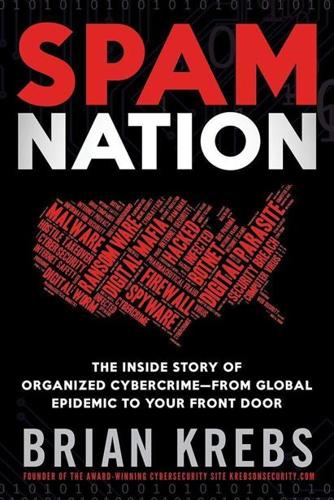
Spam Nation: The Inside Story of Organized Cybercrime-From Global Epidemic to Your Front Door
by
Brian Krebs
Published 18 Nov 2014
But most importantly, the pill shop must ask for and receive a legitimate, doctor-ordered prescription before shipping prescription drugs to Americans. To make matters worse, Horton said many of the 40,000-plus rogue online pharmacies rely on multiple suppliers, meaning that the quality and safety of the drugs they ship can shift from day to day as prices in the wholesale and drop-shipping markets fluctuate. “Most of these pharmacy affiliate programs don’t just have one supplier,” Horton said. “Some of the bigger ones have dozens. So, just because a given drug from a specific pharmacy program tests as genuine one day doesn’t mean it’s going to be the same genuine drug the next time someone orders it.”

Evil by Design: Interaction Design to Lead Us Into Temptation
by
Chris Nodder
Published 4 Jun 2013
Now, because each bid raises the price of the item by 1 cent, you know that there were 12,000 bids on average per iPad. 12,000 x $0.50 = $6000. $6000 + $120 = $6120. Apple’s own site sells the same model for $499, so the revenue per iPad to arrowoutlet.com is $5621. It needn’t even hold stock of the item because it can drop-ship it directly from Apple. The sites often claim to lose money on a large proportion of their auctions. However, there is no need to feel sorry for them. Apparently the losses are more than compensated for by the 1100 percent profit on high-ticket high-desirability items such as iPads. Ned Augenblick at Berkeley used an algorithm to capture the statistics for 166,000 auctions and found that auction revenues typically exceed 150 percent of the value of the item being auctioned, as long as the site has a sufficiently high number of bidders for each active auction so that the war of attrition continues for long enough to bid the price up.

Company of One: Why Staying Small Is the Next Big Thing for Business
by
Paul Jarvis
Published 1 Jan 2019
Traditionally, having a small business was thought of as a good starting point, or as what happens when a business finds only limited success. But there’s a new breed of business that starts small and stays small, and not for lack of vision or strategy, but because these days one person (or a tiny team) can accomplish a lot. Technology is constantly improving, allowing us to do things like automate sales funnels, or drop-ship physical products with no need for warehouses and staff, or print-on-demand without investing in machinery and storage. WordPress, the software that powers 26 percent of all websites on the internet, closed its gorgeous San Francisco office, not because the company was out of money (it’s extremely profitable) but because employees were barely working at the office, opting instead to work at home.

Buy Then Build: How Acquisition Entrepreneurs Outsmart the Startup Game
by
Walker Deibel
Published 19 Oct 2018
Non-revenue generating IP is typically 64 referred to as a “startup looking for funding.” Instead, you, as an acquisition entrepreneur, will be looking to acquire a company’s infrastructure only so far as its ability to generate cash flow. GOODWILL Goodwill is an intangible asset that represents the value over and above the value of the hard assets. For example, let’s say a drop-shipping based, eCommerce company with no real estate, inventory, or assets of any kind generates $250,000 in earnings every year for the owner. When the company is bought for $800,000 (3.2 multiple on $250,000), where is the value booked? In goodwill. Goodwill can also be referred to as a “customer list” or any other intangible asset name that was acquired at a premium over asset value.

Ghost Road: Beyond the Driverless Car
by
Anthony M. Townsend
Published 15 Jun 2020
The widespread use of robofreight will, however, create new systemic risks. In the last decade we’ve witnessed how automated trading in financial markets can flood exchanges with electronic orders and produce flash crashes. Imagine that kind of power put to work in the world of distribution. A speculator might reach out from across the globe and drop-ship a factory’s worth of goods onto city streets simply to undercut the competition. We’d have to revise the dictionary entry for dumping to reflect the arrival of this barbaric new trade practice. Or could companies withdraw from communities at a moment’s notice if their demands for tax breaks, infrastructure, and regulatory concessions weren’t met?

The Quantum Magician
by
Derek Künsken
Published 1 Oct 2018
“Shut up,” Belisarius whispered back, moving briskly. “You had me worried for a minute,” she said. “How long have we got?” Belisarius asked. “Probably twelve minutes on the Scarecrow virus,” Saint Matthew said. “The external sensors are showing a Congregate frigate that will be in a position to send drop ships in forty minutes.” Two running guards passed them, sparing a brief glance for the captain escorting a prisoner. They walked into the bay and found ground crew standing uncertainly, speaking to several guards with sidearms. The guards moved to intercept. Marie clutched her mushy cubes and looked like she wanted to throw them.
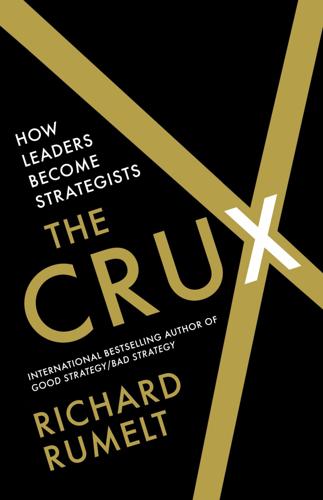
The Crux
by
Richard Rumelt
Published 27 Apr 2022
What challenges did PC makers face? Felicia answered that “these guys are some of the most sophisticated buyers in the world. Guys like Dell and HP [Hewlett-Packard] carry almost no inventory and can assemble a computer to order in less than an hour.” She went on to say that Sony monitors were drop-shipped direct to business customers. “These guys don’t need anything from us except low prices and on-time delivery,” she continued. Overall, their business problems were slowing demand and margins being squeezed by competition with each other. The head of sales offered that there were makers who specialized in the PC-gamer segment.
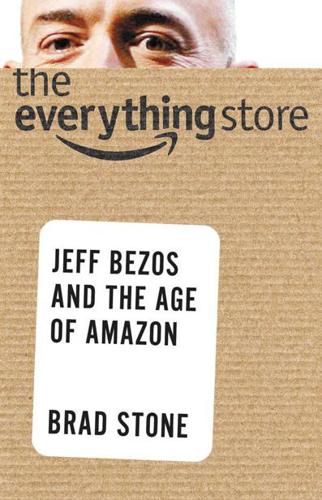
The Everything Store: Jeff Bezos and the Age of Amazon
by
Brad Stone
Published 14 Oct 2013
Wilke asked Graves if he might meet with Wilke and his colleagues later that month to take a fresh look at their problems. Bezos and Wilke were asking themselves a fundamental question that seems surprising today: Should Amazon even be in the business of storing and distributing its products? The alternative was to shift to the model used by rivals like Buy.com, which took orders online but had products drop-shipped from manufacturers and distributors like Ingram. That St. Patrick’s Day, some of Amazon’s biggest brains descended on a drab meeting room at the Fernley, Nevada, fulfillment center. Jeff Bezos and Brewster Kahle, a supercomputer engineer and founder of Alexa Internet, a data-mining company Amazon had acquired, made the two-hour flight from Seattle on Bezos’s newly purchased private plane, a Dassault Falcon 900 EX.
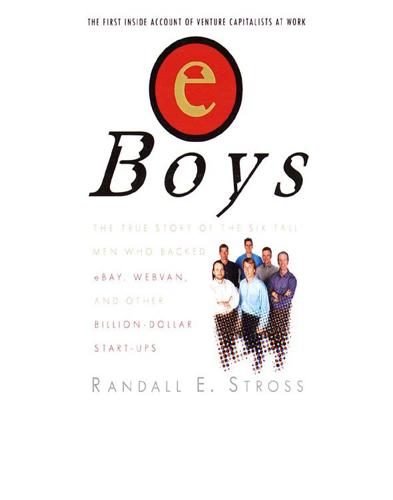
eBoys
by
Randall E. Stross
Published 30 Oct 2008
he asked, parenthetically cracking, “which we only thought about after we made the investment.” He had reason to be optimistic: “It turns out that this is very, very different than Amazon books. The supply chain in toys is incredibly complicated. There are thousands of sourcing relationships. You don’t just get to drop-ship them in Memphis. You’ve got to buy unit quantity—two hundred fifty thousand—in China, get them on a boat and to the United States and distribute it out to your stores, or in the case of the dot.com business, get it into your Memphis warehouse. This is very, very different, and far more complicated, and a source of great expertise at Toys ‘R’ Us.”

The Great Railway Bazaar
by
Paul Theroux
Published 1 Jan 1975
Nikola explained that there were two currents in the Sea of Japan, the warm Kyushu current from the south, and the cold current from the Sea of Okhotsk: they met and made great turbulence. All day the ship rolled in a snow storm into the deepness of the swelling sea, at the far trough of each swell thumping an enormous wave that shook the windows. The dropping ship gave me a sensation of weightlessness, which the shuddering screws a moment later turned into nausea. The seasickness was half fear - that the ship would founder in that icy sea, that we would have to cope with the snow and those waves in frail lifeboats. The Pole said I looked ill. 'I feel ill.’

The Coming Wave: Technology, Power, and the Twenty-First Century's Greatest Dilemma
by
Mustafa Suleyman
Published 4 Sep 2023
Put simply, passing a Modern Turing Test would involve something like the following: an AI being able to successfully act on the instruction “Go make $1 million on Amazon in a few months with just a $100,000 investment.” It might research the web to look at what’s trending, finding what’s hot and what’s not on Amazon Marketplace; generate a range of images and blueprints of possible products; send them to a drop-ship manufacturer it found on Alibaba; email back and forth to refine the requirements and agree on the contract; design a seller’s listing; and continually update marketing materials and product designs based on buyer feedback. Aside from the legal requirements of registering as a business on the marketplace and getting a bank account, all of this seems to me eminently doable.
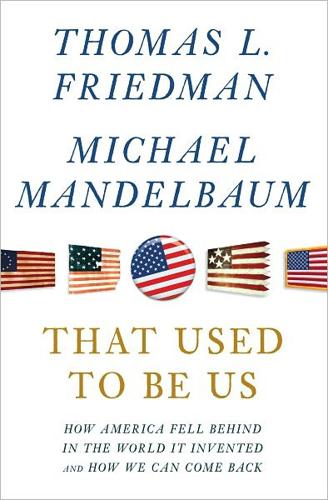
That Used to Be Us
by
Thomas L. Friedman
and
Michael Mandelbaum
Published 1 Sep 2011
A few days later, a prototype will be at their door, and once it all checks out, they can push a few more buttons and be in full production, making hundreds, thousands, or more. They can become a virtual micro-factory, able to design and sell goods without any infrastructure or even inventory; products can be assembled and drop-shipped by contractors who serve hundreds of such customers simultaneously. Today, micro-factories make everything from cars to bike components to bespoke furniture in any design you can imagine. The collective potential of a million garage tinkerers is about to be unleashed on the global markets, as ideas go straight into production, no financing or tooling required.

Stacy Mitchell
by
Big-Box Swindle The True Cost of Mega-Retailers
and
the Fight for America's Independent Businesses (2006)
Otherwise, what are normally loyal customers may end up making their online buys at Home Depot, Lowe’s, or Sears.56 Independent bookstores have developed similar initiatives. About three hundred now have e-commerce sites that allow customers to search and order from a vast database of titles—with those in stock shipped by the local store and others drop-shipped by a wholesaler. These sites are powered by either BookSite, a shared platform developed in 1996 by Dick Harte, owner of Rutherford’s Book Shoppe in Delaware, Ohio, or BookSense.com, created by the American Booksellers Association. These competing technologies enable local bookstores to have their own unique Web sites, with their own look and feel, list of author events, and book reviews.

Shoot for the Moon: The Space Race and the Extraordinary Voyage of Apollo 11
by
James Donovan
Published 12 Mar 2019
Two engineers there—one with the title of head of human factors—claimed that America could beat the Russians to the moon only if an astronaut was sent there on a one-way trip. After all, it was already technically possible to get a man to the moon; getting him back safely to Earth was the issue. After landing in a modified Mercury spacecraft, the astronaut would stay there, with oxygen, food, and supplies, and live in a pressurized hut drop-shipped earlier. More supplies would continue to be delivered. It would probably take at least a year and twenty-two cargo rockets to get a one-man moon base up and running—and several more years before NASA figured out how to bring him back. There is no evidence that NASA ever actually considered this suggestion.
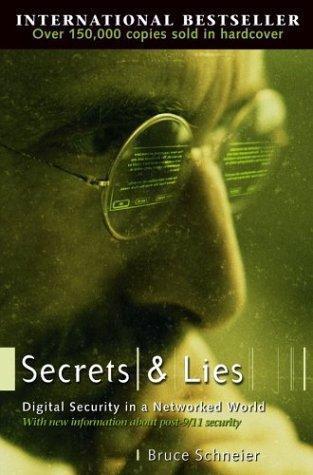
Secrets and Lies: Digital Security in a Networked World
by
Bruce Schneier
Published 1 Jan 2000
She could charge purchases to Bob’s account, but she’s wilier than that. She advertises merchandise— cameras, computers, whatever—at a very cheap price. Carol sees the advertisement and buys a product from Alice. Alice orders the product from a legitimate retailer, using Bob’s credit card number. The retailer ships the product to Carol—there’s so much drop-shipping going on that the packing slip doesn’t have the price—and is stuck when Bob notices the charge. Even worse: Carol is inculpated, not Alice. Automated social engineering can work against large groups;you can fool some of the people all the time. In 1993, subscribers to the New York ISP Phantom Access received this portentous, forged, e-mail message: “It has been brought to my attention that your account has been ‘hacked’ by an outside source.

Chaos Monkeys: Obscene Fortune and Random Failure in Silicon Valley
by
Antonio Garcia Martinez
Published 27 Jun 2016
Zuck informed us that we’d be given all the spray cans, brushes, and paints we wanted, and be allowed to stake out any part of the campus as our own . . . and create art! Given our little performance of mob violence during the moving-out step, this was a considerable leap of faith. The appointed day arrived, and a Home Depot’s worth of paints and supplies were drop-shipped into the public areas of every building. The time was early evening, when people were switching gears from the meetings and coding of the day, and pondering going either to the gym or to the cafés for dinner. With nothing in the way of direction other than Zuck’s mandate to produce art, people started arming themselves with the stockpile of paints and going at it.
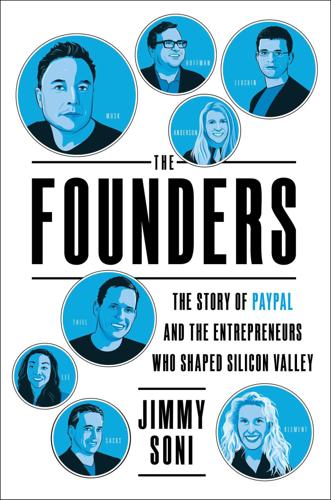
The Founders: The Story of Paypal and the Entrepreneurs Who Shaped Silicon Valley
by
Jimmy Soni
Published 22 Feb 2022
The buyer would demand a refund, and PayPal—the financial intermediary—stood liable for providing it. The company came to appreciate that this type of fraud vexed retailers big and small; it was table stakes. “Merchant fraud was sort of irritating,” Botha remembered, “but it was a little bit of the cost of doing business.” The more concerning type of fraud involved credit cards, foreign drop-ship sites, and even shell companies. Some hackers opened PayPal accounts with stolen credit cards, bought and shipped goods overseas, then resold them. Other fraudsters devised shell companies and duped unsuspecting buyers into purchasing phony goods, then pocketed the money without sending anything.

We Were Soldiers Once...and Young: Ia Drang - the Battle That Changed the War in Vietnam
by
Harold G. Moore
and
Joseph L. Galloway
Published 19 Oct 1991
He flew right at me and obviously was not going where he was directed. I yelled at him on the radio: "You're gonna get hit! You're gonna get hit!" He thundered right over my head, fifty feet up, shuddered, and banked in a hard right turn to the west and north. Then the pilot, CWO Donald C. Estes, guided his dropping ship, rotor blade whapping, into the trees just across the clearing from the termite-hill command post. The chopper and crew were immediately secured by the nearest troops. Two of our sixteen helicopters were now disabled in the landing zone. Estes, thirty, from Auburn, Alabama, was later killed in action on June 24, 1966.

Clojure Programming
by
Chas Emerick
,
Brian Carper
and
Christophe Grand
Published 15 Aug 2011
At this point, all of the facilities of multimethods are available to us. Our process-event implementations simply echo some descriptive text to *out*; of course, real implementations of such methods would do something far more substantial: for our scenario, they’d send an invoice, cause product to be drop-shipped, add a lead to a CRM system, and so on. Example 15-7. Implementing processing of sales-related “realtime” events (ns salesorg.event-handling (use [eventing.processing :only (process-event)])) (defmethod process-event 'sales/purchase [evt] (println (format "We made a sale of %s to %s!" (:products evt) (:username evt)))) (defmethod process-event 'sales/lead-generation [evt] (println "Add prospect to CRM system: " evt)) Finally, we can set up our watch, which will drive the processing of each event, after pulling out the actual document that triggered the event in the first place, removing the CouchDB-specific :_id and :_rev slots, and converting the concrete :evt-type string into a symbol so its dispatch within the process-event multimethod is driven by the hierarchy we’ve built up and not the strings returned to us by CouchDB.